Hinamatsuri, or Girls’ Day, is a traditional Japanese celebration held on March 3rd each year to wish for the health and happiness of young girls. It is also called “Momo no Sekku” (Peach Festival) because it coincides with the blooming of peach blossoms. Families celebrate by displaying hina dolls and enjoying special dishes like chirashizushi and hina-arare.

This time, we will talk about Hinamatsuri in Japan!
History of Hinamatsuri
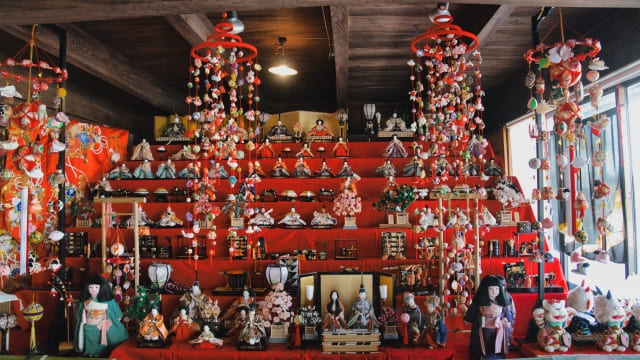
The origins of Hinamatsuri date back to the mid-Heian period (about 1,000 years ago). It evolved from the combination of an ancient Chinese custom of purifying oneself with water on the first Snake Day of March and a traditional Japanese doll-playing ritual.
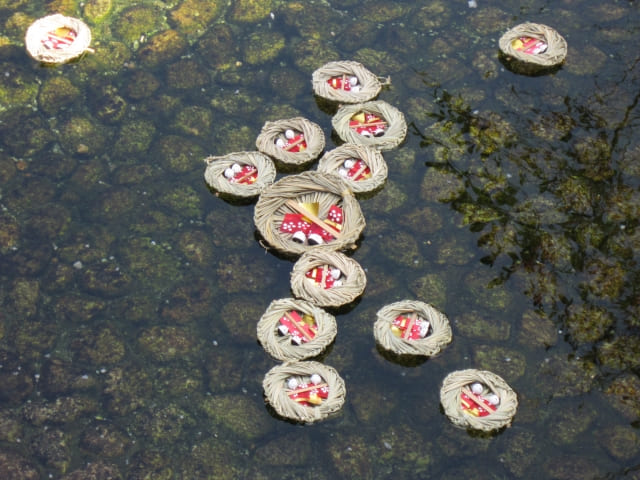
In the past, people performed “Nagashi-bina,” a ritual where they transferred their misfortunes to paper dolls and set them afloat in rivers or the sea to ward off evil. This custom is still practiced today at places like Shimogamo Shrine in Kyoto and Kurayoshi City in Tottori Prefecture.
The origin of Nagashi-bina is believed to stem from the story of Izanagi and Izanami. When they attempted to create the land, they first gave birth to a deformed child, Hiruko, whom they set adrift on the sea in a reed boat.

It is said that Onmyoji (Japanese yin-yang masters) played an active role in the Nagashi-bina ritual.
By the Muromachi period, Hinamatsuri became a fixed event on March 3rd, but it was still primarily a purification ritual rather than a celebration. However, during the Edo period, as Japan enjoyed prolonged peace, the festival transformed into a more joyous occasion celebrating the growth of young girls.
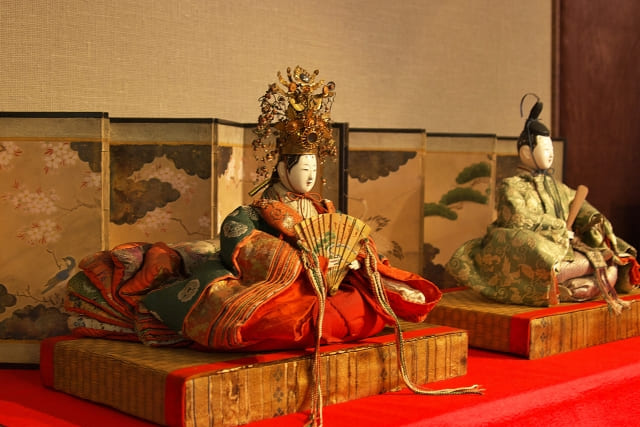
By the mid-Edo period, the tradition of “Hatsuzekku” emerged, marking the first Hinamatsuri for newborn girls as an important family event. The way hina dolls were displayed also evolved, shifting from placing them directly on tatami mats to the tiered displays seen today.
How to Display Hina Dolls
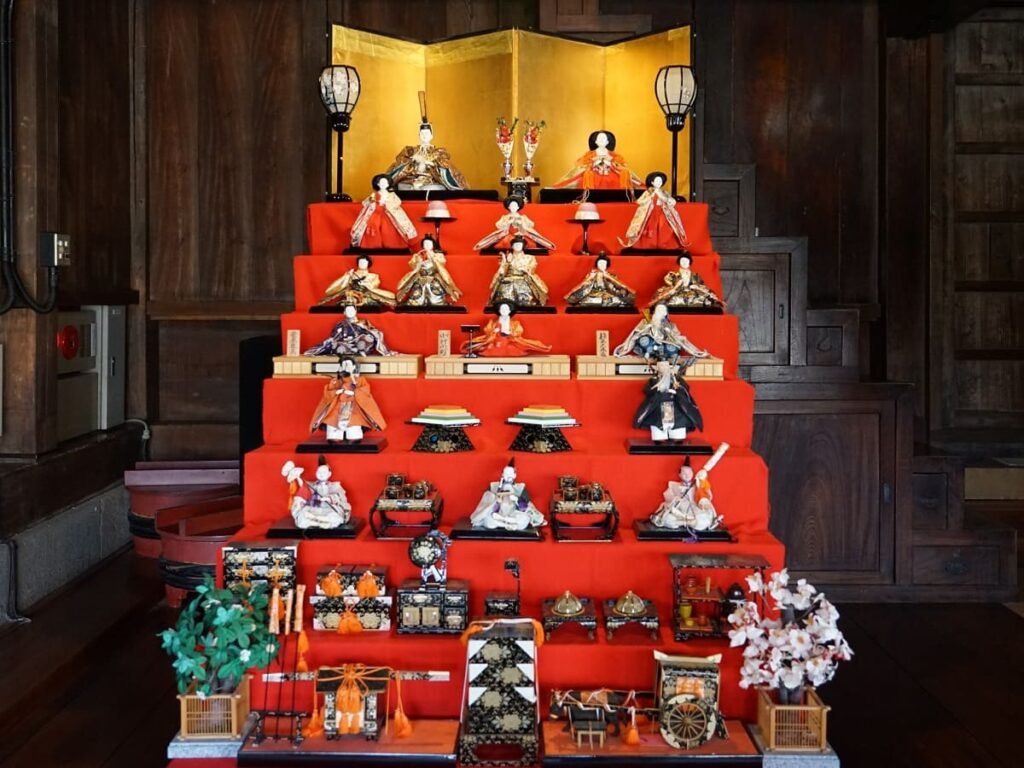
The arrangement of hina dolls varies by region and household, but the most common style is a seven-tiered display. Here’s a breakdown of the typical layout:
1st Tier: The Emperor and Empress
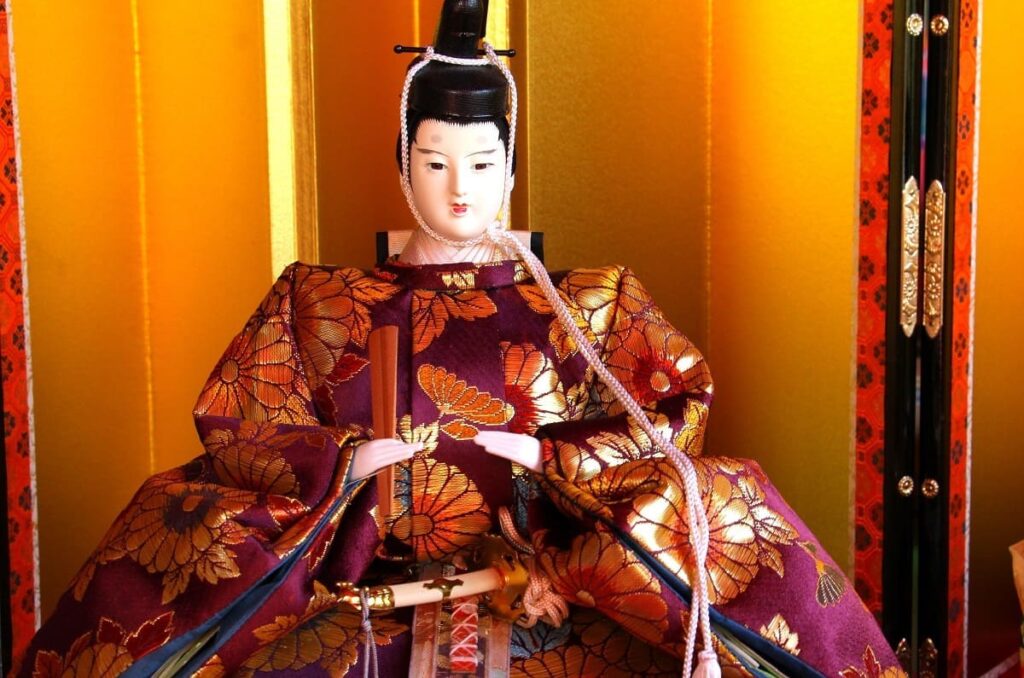
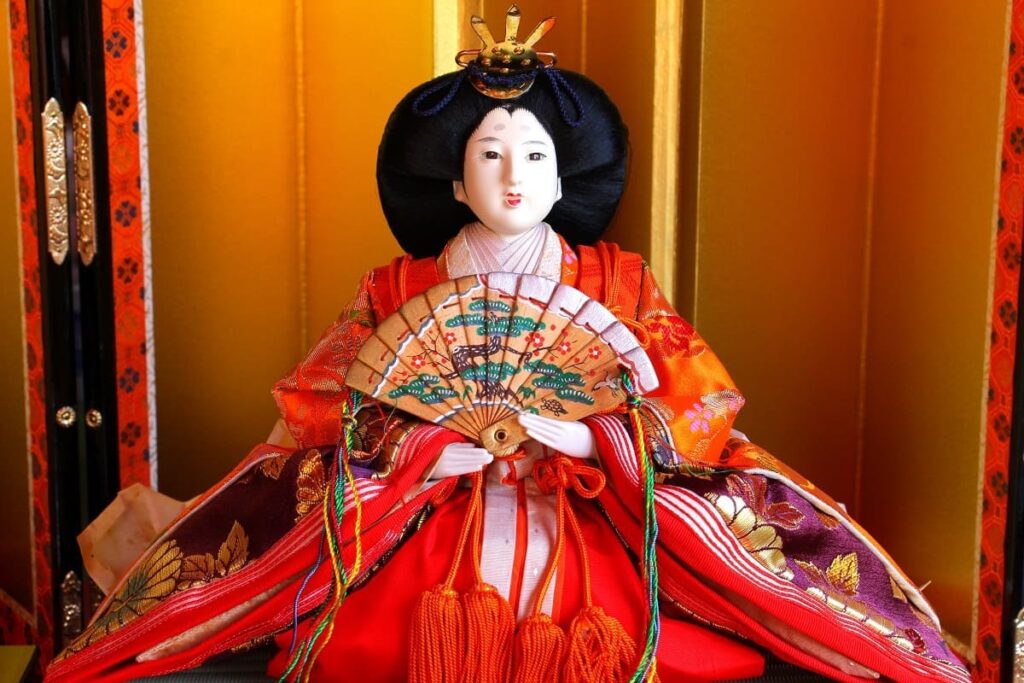
The top tier features the Emperor (Odairi-sama) and Empress (Ohina-sama). In most Kanto-region displays, the Emperor is placed on the right and the Empress on the left, while in the Kansai region, the positions are reversed.

By the way, these dolls above in the pictures are mine.
Recently I only decorate these two dolls.

Assembling all the tires is a hard job.
2nd Tier: Three Court Ladies
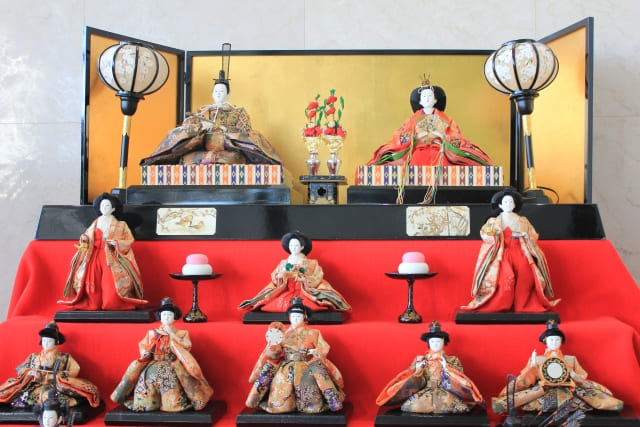
These three female attendants serve the imperial court. The one seated in the middle is flanked by two standing ladies.
3rd Tier: Five Musicians

These five performers hold traditional musical instruments and are arranged from right to left as follows: singer, flute, small drum, large drum, and taiko drum. Remembering that the instruments get larger as you move left makes it easier to understand.
4th Tier: Ministers
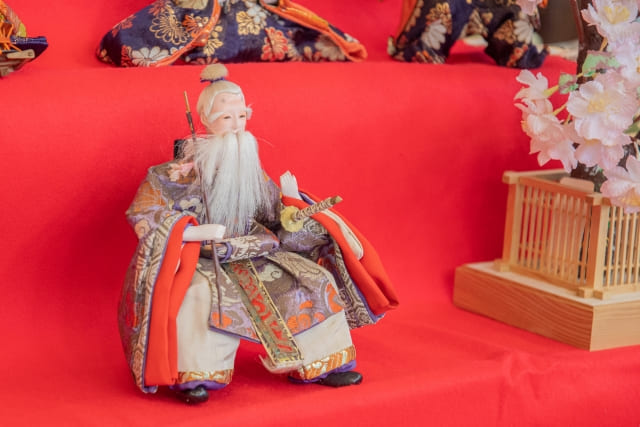
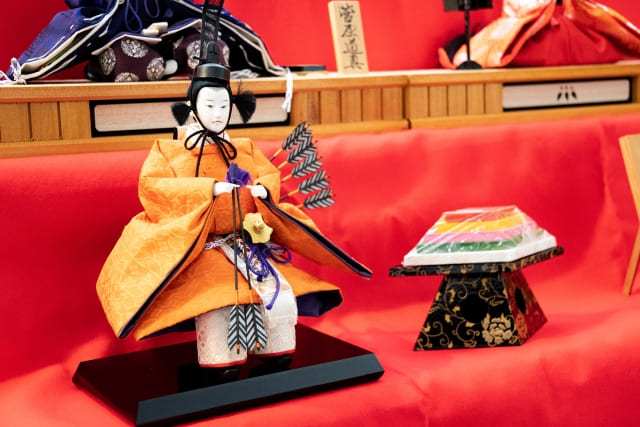
Two ministers act as protectors of the Emperor. The older and more experienced Left Minister has a white beard, while the younger Right Minister has a refined appearance.
5th Tier: Three Servants
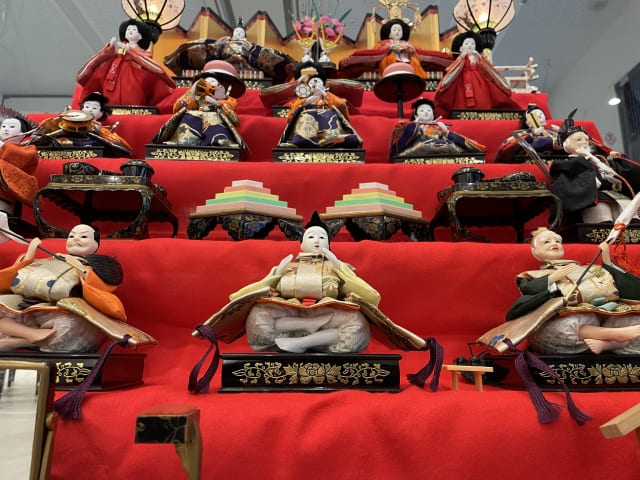
These three retainers display expressive faces representing emotions such as crying, laughter, and anger.
6th Tier: Bridal Accessories
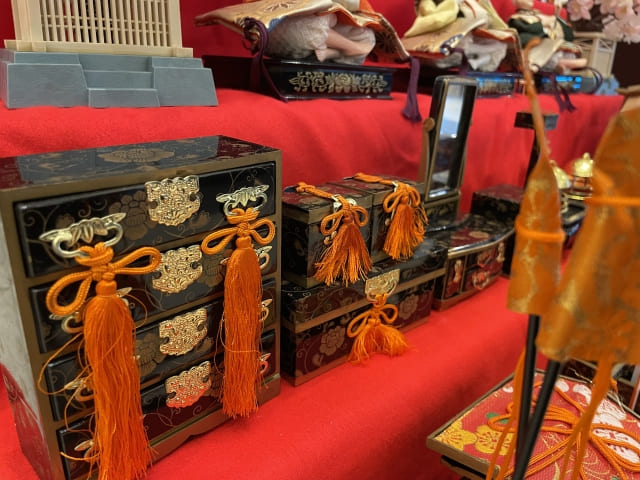
This tier features items traditionally included in a noblewoman’s dowry, such as a chest of drawers, storage boxes, a vanity mirror, and a sewing kit.
7th Tier: Travel and Wedding Items
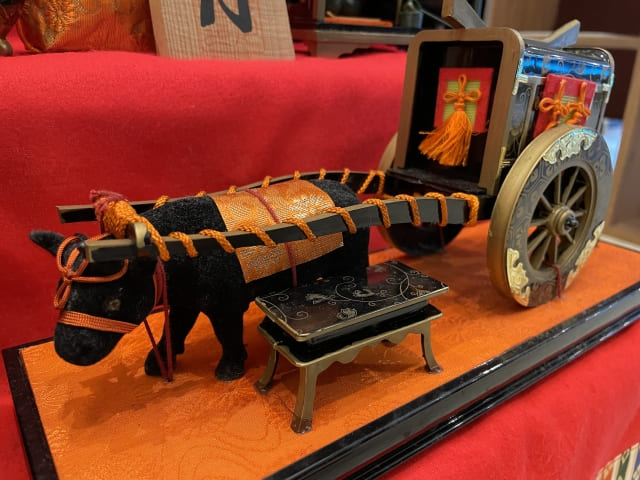
The bottom tier holds a ceremonial palanquin, an ox-drawn carriage, and a multi-tiered lacquered food box.
Foods Eaten on Hinamatsuri
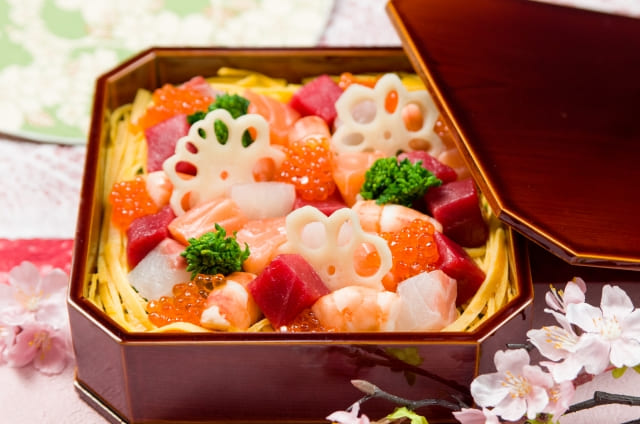
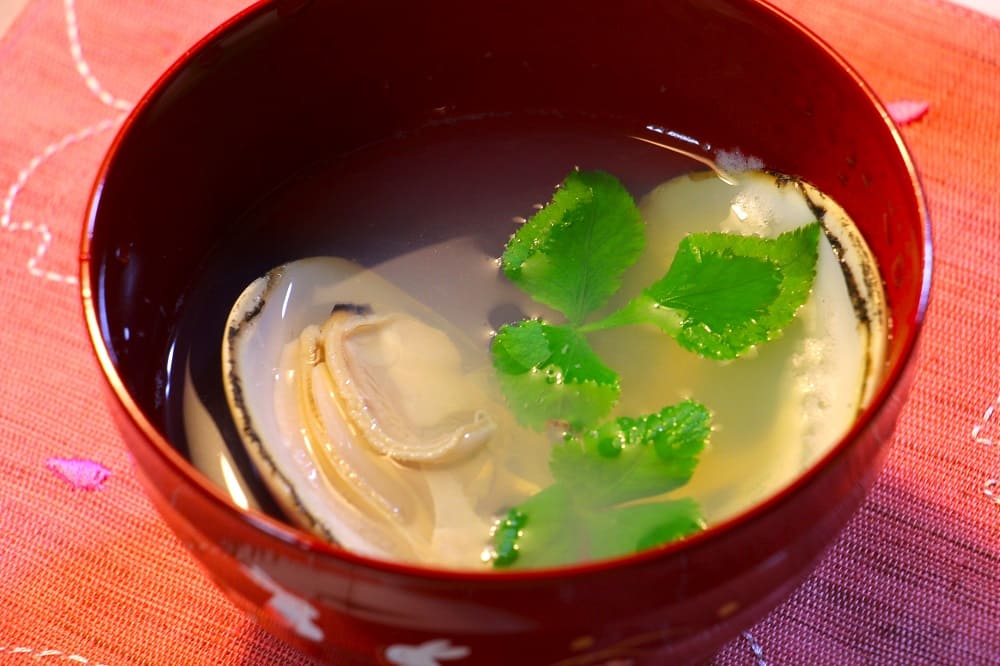
Special dishes are enjoyed during Hinamatsuri, each carrying symbolic meanings:
- Chirashizushi – A colorful sushi dish topped with auspicious ingredients such as shrimp (symbolizing longevity), lotus root (for good fortune), and salmon roe (for prosperity).
- Hamaguri Soup – Clam soup symbolizes a happy and lifelong marriage, as only matching halves of a clamshell fit together.
- Hina-arare – Small, colorful rice crackers representing the four seasons and bringing good luck.
- Hishi-mochi – A three-layered rice cake with red (for health), white (for purity), and green (for longevity).
Modern Trends in Hina Doll Displays
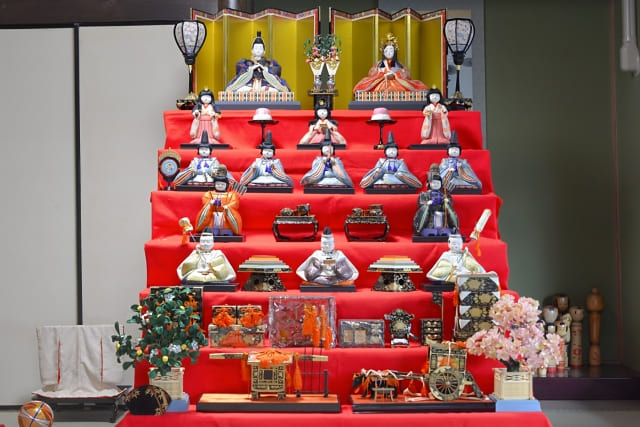
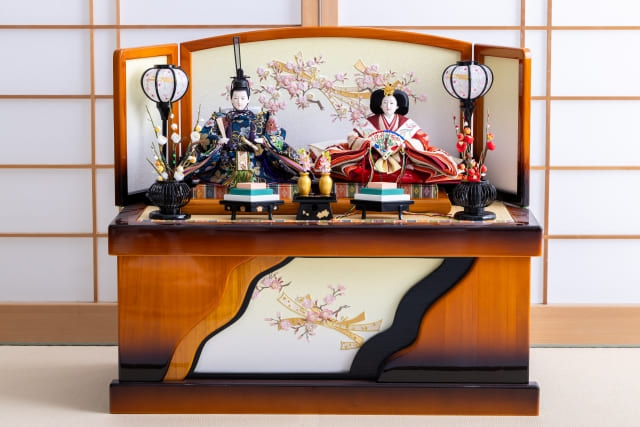
Although the traditional seven-tier display remains iconic, modern families are opting for more compact setups such as three-tier displays or simple Emperor and Empress-only arrangements.
Why Compact Displays Are Popular
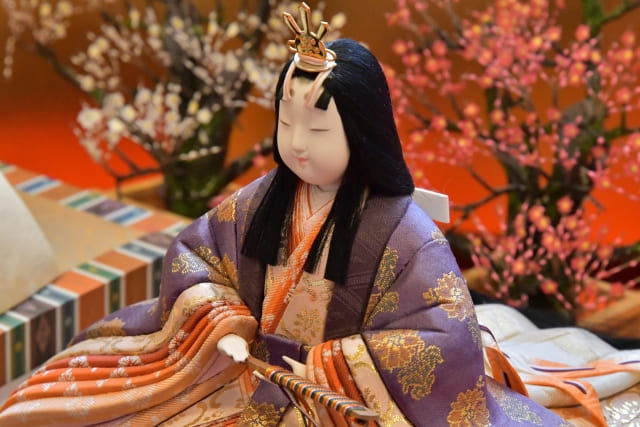
- Changing housing situations – Many families live in apartments with limited space.
- Ease of setup – Large displays take considerable time and effort to arrange.
- Minimalist designs – Modern, stylish hina dolls blend seamlessly into home interiors.
- Growing international interest – Overseas buyers and Japanese families abroad are increasingly purchasing hina dolls.

If you are planning to get dolls,
check the store below. They are shipping abroad, too!
If you are interested in Japanese dolls, read the article below as well!
Conclusion
Hinamatsuri is a cherished tradition that has evolved over time, from its origins as a purification ritual to a joyful celebration of girls’ growth and happiness. The way hina dolls are displayed varies by region, and in recent years, compact designs have become the norm. The foods associated with the festival are rich in symbolism, each carrying a special wish for health, longevity, and prosperity.
As the festival continues to adapt to modern lifestyles, its essence remains unchanged—a heartfelt celebration of young girls and family bonds. On March 3rd, why not take part in this beautiful tradition by displaying hina dolls and enjoying a festive meal with loved ones?

If you are interested in Japanese culture, and you love gaming, you may love these games! Let’s play!

Yes! Let’s play!

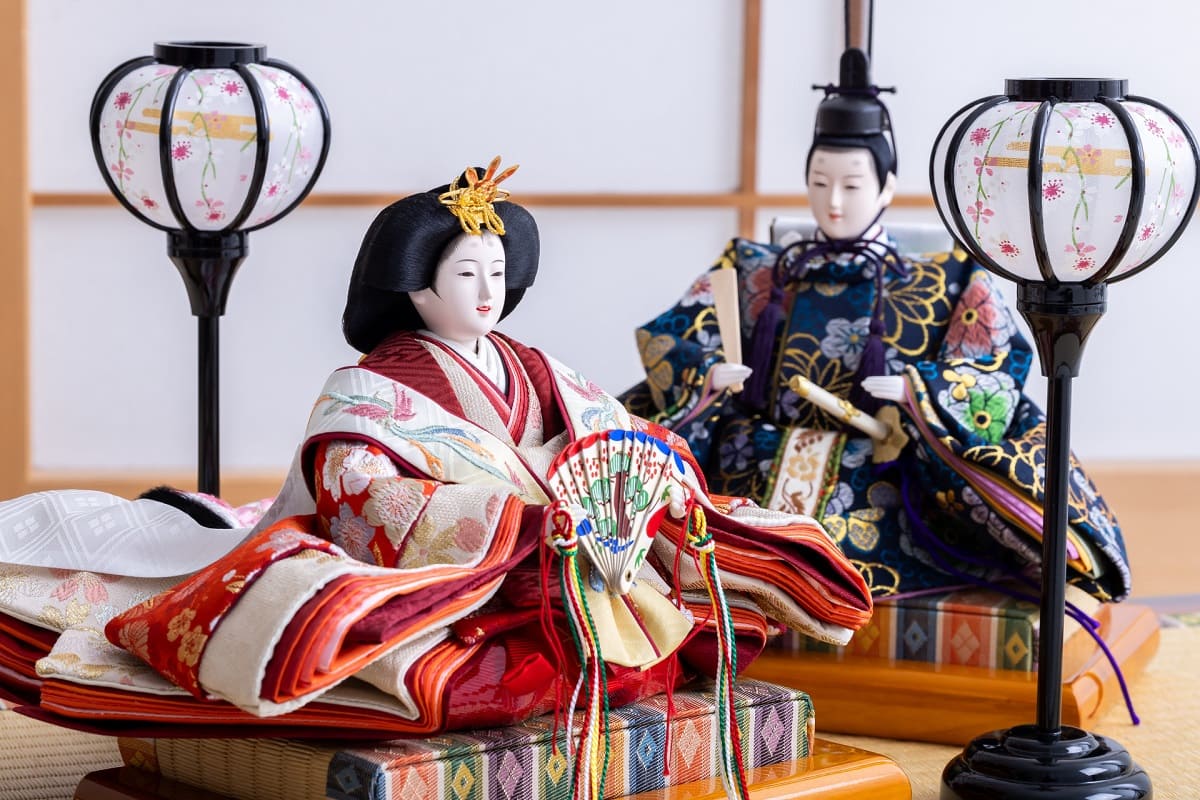




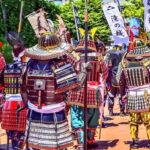
Comments